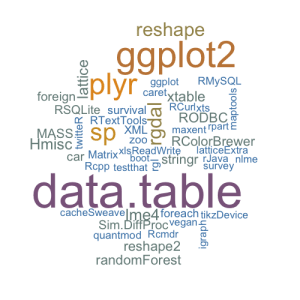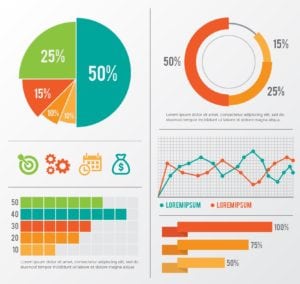Data Science and Machine Learning Internship ...
- 22k Enrolled Learners
- Weekend/Weekday
- Live Class
In a world where 2.5 quintillion bytes of data are produced every day, a professional who can organize this humongous data to provide business solutions is indeed the hero! The mix of personality traits, experience and analytics skills required for the data scientist role is considered difficult to find, and, thus, the demand for qualified data scientists has exceeded supply in recent years.
Data Scientist’ is the sexiest job title of the 21st century. Data scientist topped the list of 50 Best Jobs in America by Glassdoor.com in 2016 and again in 2017, based on metrics such as job satisfaction, number of job openings and median base salary and the simple way to become one lies in R programming.
R, the language and environment for statistical computing and graphics, is the fastest growing open source competitor to commercial software packages like SAS, STATA and SPSS. R has earned the mettle of being a very powerful language used widely for data analysis and statistical computing. R has earned the mettle of being a very powerful language used widely for data analysis and statistical computing. Since its birth in the early 90s, R’s user interface has continually become more enhanced and interactive.





There is a very close battle when it comes to choosing between R and Python. For a flourishing data science career, you have to master at least one of these two languages. One tends to favour R a little more since it is better suited for conducting complex exploratory data analysis. R has some unique features that are important for data science applications. Some of these features are explained below:
Every industry, from automobile to social networking to banking, has committed to using R programming for effective data analysis. Ford Motors built features in its Fiesta car after analyzing social chatter around dream functionalities that users wish for in a car. Facebook uses R programming to categorize status messages into 68 categories and deriving a metrics around the nature of status messages get posted at different times of the day. Google not only uses R but wrote standards for the language that is overall widely accepted. Microsoft purchase Revolution Analytics, which is kind of the commercial version of R and developed servers and services on top of it. Uber could successfully generate insights around reduction in drunken driving cases across the US ever since it increased its fleet size.
These are just a few of the many interesting use-cases of R adoption. Every day, somebody new commits to R and begins a new and innovative data science journey.
Edureka has a specially curated Data Science Course Online that helps you gain expertise in Machine Learning Algorithms like K-Means Clustering, Decision Trees, Random Forest, Naive Bayes. You’ll learn the concepts of Statistics, Time Series, Text Mining, and an introduction to Deep Learning as well. New batches for this course are starting soon!!
 Thank you for registering Join Edureka Meetup community for 100+ Free Webinars each month JOIN MEETUP GROUP
Thank you for registering Join Edureka Meetup community for 100+ Free Webinars each month JOIN MEETUP GROUPedureka.co
This is the era of big data. The internet is an ocean of streaming data that contains all types of information. The IoT generates huge data. Recently I have completed R programming course from online Simple Analytics Inc with good learning Technic and affordable course fee.